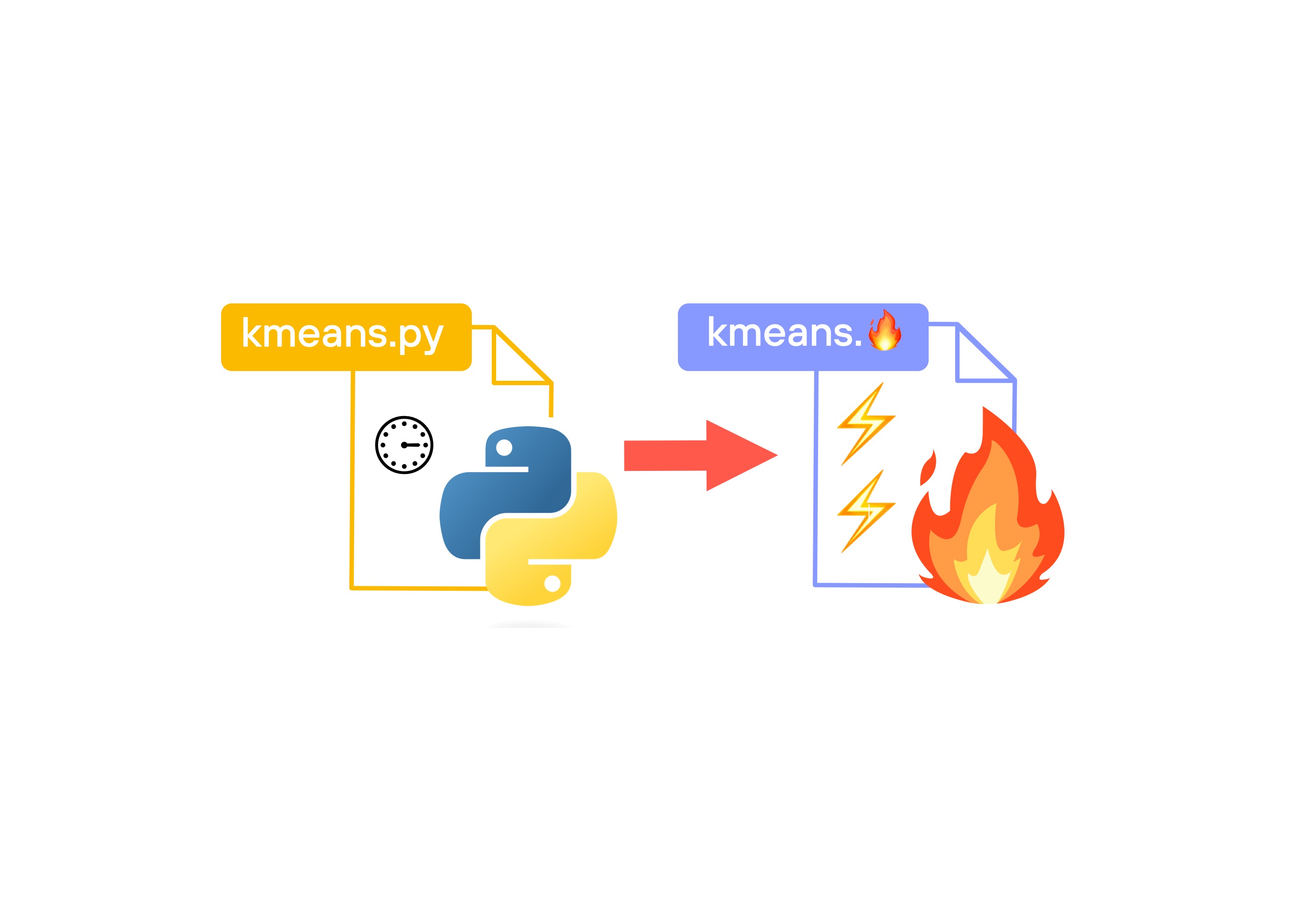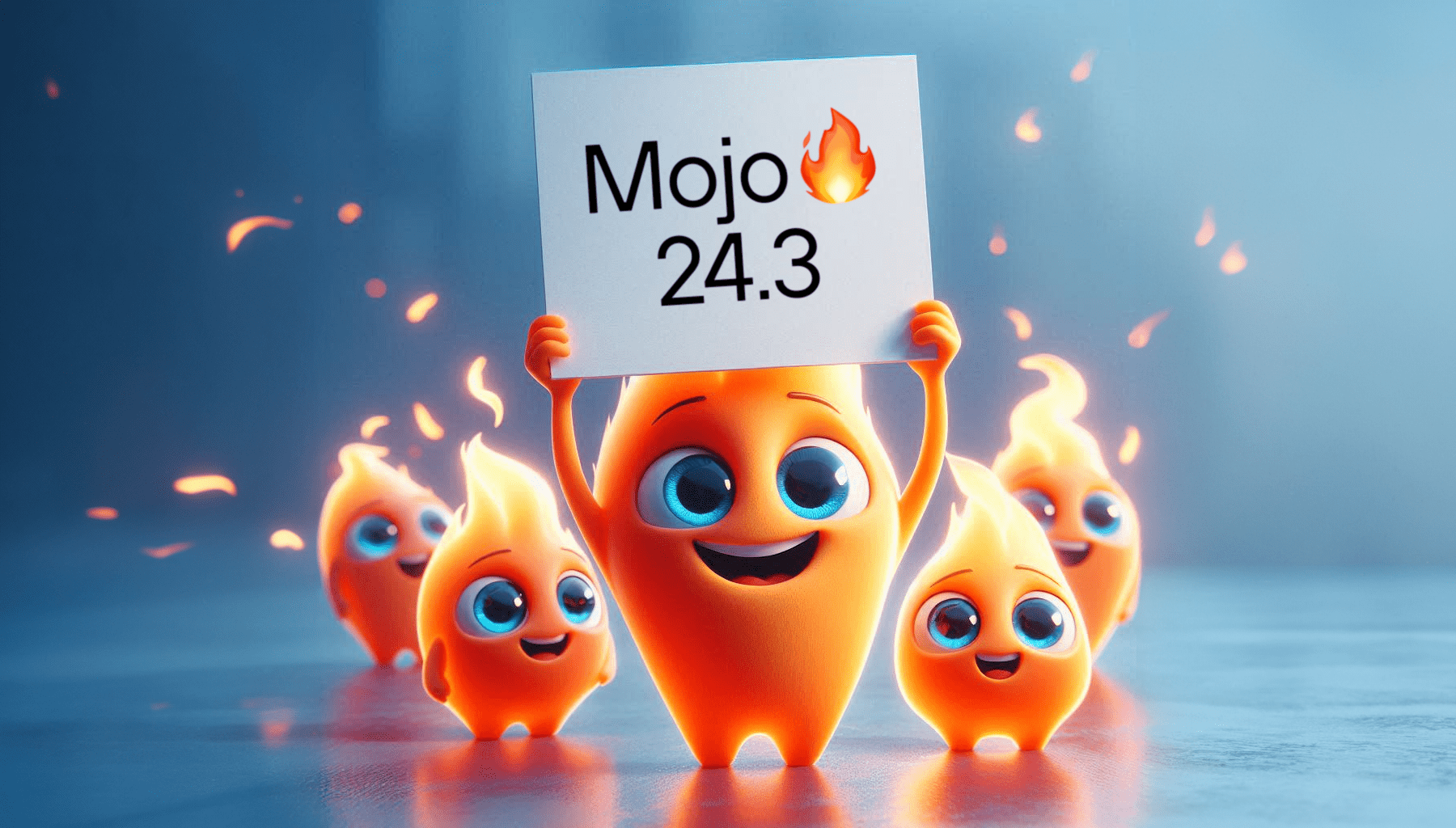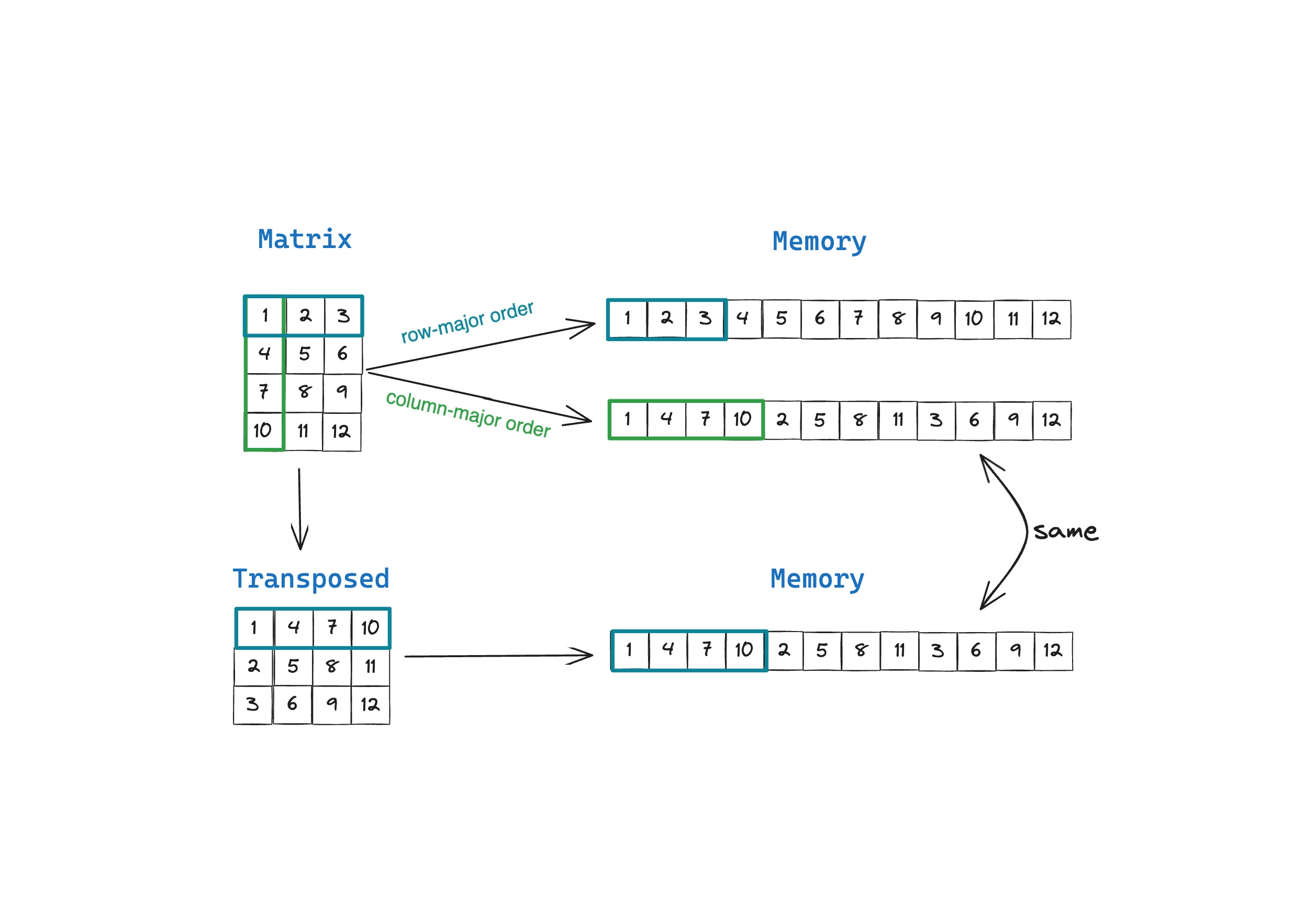
What’s new in Mojo 24.4? Improved collections, new traits, os module features and core language enhancements
Mojo 24.4 is now available for download, and this release includes several core language and standard library enhancements. In this blog post, we’ll dive deep into many of these features using code examples. One of the biggest highlights of this release is that we received 214 pull requests from 18 community contributors for new product features, bug fixes, documentation enhancements, and code refactoring. These contributions resulted in 30 net new features in the standard library, accounting for 11% of all improvements in this release. We’re incredibly proud of the momentum we’re seeing with community contributions, and it goes without saying – you are the real star of this release. On behalf of the entire Mojo team, we’d like to thank you for all your contributions to making Mojo awesome!

MAX 24.4 - Introducing quantization APIs and MAX on macOS
Today, we're thrilled to announce the release of MAX 24.4, which introduces a powerful new quantization API for MAX Graphs and extends MAX’s reach to macOS. Together, these unlock a new industry standard paradigm where developers can leverage a single toolchain to build Generative AI pipelines locally and seamlessly deploy them to the cloud, all with industry-leading performance. Leveraging the Quantization API reduces the latency and memory cost of Generative AI pipelines by up to 8x on desktop architectures like macOS, and up to 7x on cloud CPU architectures like Intel and Graviton, without requiring developers to rewrite models or update any application code.

Deep dive into ownership in Mojo
This post blog is the second part of the series of ownership in Mojo. Please make sure to check out the first part, What Ownership is Really About: A Mental Model Approach, as we will build on concepts developed there. This post serves as accompanying material for the deep dive on ownership by our CEO, Chris Lattner. Be sure to watch the video as well, which covers how ownership is implemented in Mojo's compiler, providing further insights and technical details.

What ownership is really about: a mental model approach
Ownership is a well-known concept in modern programming languages such as Mojo that aims to provide a safe programming model for memory management while ensuring high performance. This allows programmers to build safe abstractions without the need to manually manage memory, making development more efficient and less error-prone.

Fast⚡k-means clustering in Mojo🔥: a guide to porting Python to Mojo🔥 for accelerated k-means clustering
There are several clustering algorithms, but k-means — the algorithm we're going to implement from scratch in Python and Mojo🔥 in this blog post — is one of the most popular due to its simplicity and ease of implementation.

Developer Voices: Deep Dive with Chris Lattner on Mojo
Last week, Chris Lattner sat down for an interview on the Developer Voices podcast with Kris Jenkins. It was a wide-ranging episode that explored a variety of topics, including the motivations behind creating Mojo, what it offers to both Python and non-Python programmers alike, how it is built for performance, and which performance features actually matter. This post recaps a number of highlights from the podcast, edited for clarity and brevity. You can find the full 90 minute interview on YouTube.

What’s New in Mojo 24.3: Community Contributions, Pythonic Collections and Core Language Enhancements
Mojo🔥 24.3 is now available for download and this is a very special release. This is the first major release since Mojo🔥 standard library was open sourced and it is packed with the wholesome goodness of community contributions! The enthusiasm from the Mojo community to enhance the standard library has been truly remarkable. And on behalf of the entire Mojo team, we’d like to thank you for all your feedback, discussion and, contributions to Mojo, helping shape it into a stronger and more inclusive platform for all.

Row-major vs. Column-major Matrices: A Performance Analysis in Mojo and NumPy
A matrix is a rectangular collection of row vectors and column vectors that defines linear transformation. A matrix however, is not implemented as a rectangular grid of numbers in computer memory, we store them as a large array of elements in contiguous memory.

What’s new in Mojo 24.2: Mojo Nightly, Enhanced Python Interop, OSS stdlib and more
This will be your example-driven guide to Mojo SDK 24.2, as part of the latest MAX release. If I had to pick a name for this release, I’d call it MAXimum⚡ Mojo🔥 Momentum 🚀 because there is so much much good stuff in this release, particularly for Python developers, adopting Mojo.
Start building with MAX
Easy ways to get started
Get started guide
With just a few commands, you can install MAX as a conda package and deploy a GenAI model on a local endpoint.
Browse open source models
Copy, customize, and deploy. Get your GenAI app up and running FAST with total control over every layer.
Find Examples
Follow step by step recipes to build Agents, chatbots, and more with MAX.
